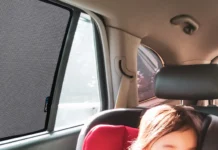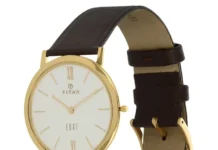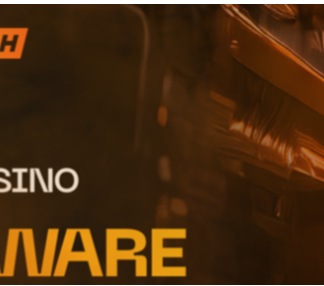Table of Contents
Introduction
In this article, I’ll look at how a cutting-plotter operates and give helpful tips on selecting the one that’s best for you. If you’d want to provide a comprehensive understanding of the subjects discussed in this article, make use of the index to find topics that interest you quickly.
After several years of experience and with dozens of users, I can confirm that the cut plotter is often the first investment that a graphic design company employs to study the market of customization and decoration. In general, you begin with an affordable beginning cutting plotter.
In the event of an increase in work and demands, We then shift to a more extensive cutting plotter or purchase cutting and printing plotters. Cutters can be connected to plotters that print only to cut and print jobs. There are various brands with different features, and we’ll examine them in the closing part of this article. However, let’s start at the beginning.
The Cutting plotter’s Technical Aspects
Depending on the model and model of cutter used, specific technical details may be different. What I’ll do, then, is provide general guidelines that apply to any professional cutting plotter. Technically speaking, the cutting plotter is essentially the printing plotter, but instead of printing, it cuts the material using cutting heads. Cut cutting head which moves across a linear guide the use of bearings. The material to be missed is moved up and down the cutting blade is connected with support, creating the cuts required to make the design you’ve drawn.
What are the supplies it may be reduce with?
The cutter can cut a variety of sheets and rolls. The most well-known for printing are colored adhesive vinyl as well as heat-sealable. Here’s a brief listing of the cutting media families you could make use of.
- Colored Self-Adhesive Carving Vinyl
- Self-adhesive vinyl, with specific finishes
- Films used for decoration of windows as well as blasting sand
- Translucent films for signs that are illuminated
- Films with reflective and fluorescent fluorescence
- Colored heat-sealable garments for clothing
- Magnetic vinyl
- Labels with adhesive sheets made of PVC
- Cardboard
After the material is cut, it’s ready to be peeled and sprayed.
The ability to cut many different types of supports makes the cutting plotter highly versatile in creating products that can be sold in various industries and markets.
The components that comprise the cutting plotter.
Each component comprising the cutting plotter is designed to ensure cutting is exact and repeatable. The higher the efficiency of these parts, the greater the final result and the longer.
I won’t get too deep into the technology so as not to overly burden you; however, it is crucial to be aware of the essential parts of it, and these are:
- Drag wheels move the material for carving due to the pressure applied on the internal knurled steel shaft rotated between the two.
- The drag motor turns the central axis to where the rollers for pinch exert pressure.
- The cutting head through a solenoid delivers the required pressure on the blade.
- The blade holder is where the cuts blades are kept.
- The cutting blade, the tool used to make the cutting, is carried out physically.
- The blade beater or protection strip is a beater that is used to stop the blade from cutting.
- The electronic boards control the movement of the material by movements of the head.
- The cutting driver software or cutting software is a communication tool between the cutting plotter and PC.
What is the cutting plotter’s function?
The cutter will only accept vector files, not images. To create a design suitable to be cut by a plotter, we can choose from a range of possibilities:
- Create a vector image by starting from scratch using the help of graphic software like Corel and Illustrator.
- Start with an image and vectorize it.
Vectorizing refers to the process of turning an image into lines.
The plotter makes the “half cut half cut,” i.e., it cuts the adhesive liner and keeps the liner that supports it intact.
I’ll demonstrate what the cut plotter functions by presenting it with a real-world instance.
The production of adhesives:
- The vinyl reel is put behind the plotter and then passed beneath the sprockets.
- Set to the space of wheels of the drive from the edge of the material. When you reduce the pressure level, the plotter will take the reading.
- To ensure proper cutting settings, conduct a cutting test.
- Utilizing the cutting software or the plug-in in the graphic software, the cut file is created, and the cut is sent.
- The cutting head rests on the vinyl and begins cutting.
As you will see, it’s a specific device to operate, and sheet materials can be loaded with the same process.
When the cut is completed, and the material is cut, it can be removed.
The portion of the material used in creating the graphic, also known as “scrap,” is removed in the real world. It is a straightforward job for large files or linear graphics. However, it can become more complex with tiny or incredibly intricate drawings. In this picture, you can see an illustration of a peeled seal.
What are the possibilities of using cutting plotters?
The cutting plotter can be a versatile peripheral since it can cut various materials transform them into different end products.
For instance, by carving a color vinyl, you can make stickers to:
- Showcases
- Walls
- Vehicles
With the same peripheral and materials, we have three different options. One of the features of professional plotters is an optical mark reader, also known as Opos. This feature is very beneficial for those who don’t possess a print-and-cut plotter but wish to offer cut-out graphics for their clients. Create the picture using a cutting vector, where you would like the image cut, and then insert those registration markings.
Print your images by laser printing with adhesive PVC or paper adhesive when you insert the markings for registration, and the plotter will scan those marks before cutting support.
With the plotters, you can print registration marks, so the print layout is compatible with the cutting lights of the plotter.
Blade or laser? The large-format digital plotters for cutting fabric
The industry of textiles is highly advanced, and we’re not talking just about printing, as well as the inducing transformation of material and consequently also the cutting machines for materials.
Alongside the visual and soft sign markets, in addition to the visual communication and quiet sign markets, which Fenix Digital Group has been watching closely for a while, They also benefit from the introduction of new plotters for textile cutting that is used in the furniture, fashion as well as automotive sectors.
Markets for cutting digital fabrics
I’ll be talking to you about clothes, from the fashion industry to the sports industry. The sports wear industry mainly uses the world of digital cutting and the large-format digital cutting tables to tailor the athletes’ technical attire.
You can find some helpful information when you work with furniture, including for points of sale since it’s a marketplace where cutting with digital technology can provide massive expansion in the finish of linen, wallpapers, tablecloths, and curtains, as well as the fabrics used to furnish objects such as seat sofas, armchairs, and armchairs, however, not just.
The automotive industry is highly complicated and requires cutting special fibers of textile and techniques that range from TNT, carbon fiber, glass fiber, aramids, and other materials like Kevlar.
In technical fabric for sports, cutting the material plays a crucial function. In visual communication and soft signage, the Scandinavian nations, Northern Europe, and the United States, mainly because of their expertise in continuous printing using 2.20 or 3.2m lights, have proven how to cut digital fabrics. Specifically, the laser can make a significant difference in manufacturing backlit flags and sheets.
Fabric cutting: the idea of printing evolves when you use digital
On the cutting fabrics for garments and furniture, and automobiles, the concept of custom-designed and limited edition pieces has been a dream for many years.
In time past, the notion of “pre-cut” was used to describe pieces of fabric punched or not, printed, however, with the primary issue being the size or format (in the sports and fashion sector) concerning the minimum quantity required.
Fabric cutting machines weren’t as adaptable and flexible as they are today, allowing on-demand changes in the format, and the notion of minimum or run for a piece or a single size, in turn, was the only limit.
Due to the development in digital plotters for cutting, the minimum quantity of orders has been exceeded, and it’s now possible to sell one piece of fabric cut to size.
Knit wear: the newest possibilities to digitally cut
Within the knit wear industry, particularly in the fashion industry, where Italy was always an innovator in the field, the idea of cutting raw fabric has been popular over the past few years. What is this all about?
In the past print of fabric, the cutting and packaging process established significant limitations in respect to the designer’s original design. These included arbitrary forms and stitching of the pieces to be concealed.
Seams, specifically, have always been a problem in the fashion industry and, most importantly, in under wear.
Due to the invention of lasers and their high-speed rotation blade.
Particularly in the case of the laser, in conjunction with the newly developed mixed and synthetic fibers can now create forms and shapes impossible to achieve mechanically using blades.
New possibilities for the raw cut fabric to create soft signing
The laser utilized in making flags or material to create backlit (or backlit) will reduce the time required to make up to three cuts typically required by mechanical systems using rotating blades.
Then, and also at the closing of the month, the benefit of lasers is remarkable: not only is it cost-effective, but it also looks more attractive.
In the case of soft signage and printing banners and flags, the time-to-market, the savings on square meters, and the elimination of waste or the limit of the run to just a small number of pieces are essential for the printer. Only the laser can ensure a perfect seal across all fabric sides without fraying.
Laser cutting: Can I master it?
It’s a good thing to note that, with lasers, it’s impossible to cut anything. Notably, the textile industry continues to profit from cutting rotary knives. However, the laser has opened up new areas previously unexplored or unattainable using a blade on its own.
The laser cutting process is available to the synthetic fibers Polyester nylon, nylon polyamide rayon because the laser seals the edges of the exterior profiles.
In other words, using lasers for cutting natural textile fibers is not a good idea for wool, cotton, or silk; the laser could cause the outer profile, rendering the product ineffective.
What is Important is the finish’s quality?
In the case of a blade cut versus laser cuts, The differences are significant; however, what determines their use isn’t technique but the final product’s standard for the particular item.
For instance: in the production of cycling jerseys or soccer suits, finishing and stitching the edges of the cuffs will not technically require a laser; therefore, the rotation of the blade could suffice.
On the other side, there are specific applications in technology, like clothing for under wear and swim wear, that require the laser as cutting the raw material is vital to eliminate the marks left by seams in certain regions, which are ugly and uncomfortable to look at.
The world of banners and flags, teardrop flags, and side-line communications products. The precision and cleanliness of cutting are a part of the industrial heritage. No one will compromise on this; furthermore, as Americans instruct, laser cutting permits one seam instead of three or two edges. They do not break in the wind, and the fabric doesn’t tear.
For the backlight to laser cutting, it saves one or two sewing operations in applying the silicone profiles used for the interlocking of graphic elements within the frame.
Can I cut stretch fabric even in jumbo size? Which unwinder do I use?
It is worth noting that in both visual communications and soft signs, elastic materials are not often or never used.
However, the fashion and sports wear markets might require huge rolls or even jumbo rolls of elastic fabrics. How do they manage them?
This Cutting Plotter is fitted with a specific “CREST” module that continually unwinds elastic fabric.
Crest comes with a sophisticated set of dancing cylindrical, which allows the drafting to be done with no loss (unwanted stretching or expanding) in the flexible cloth.
Suppose Crest’s system isn’t sufficient. This cutting plotter is fitted using an electronic interface, including the most popular third-party unwinders. Perhaps they are included in your cutting or fabric packaging business.
Conclusion:
Cutting plotters are versatile because they can cut various materials, which can be transformed into multiple end-products. For instance, when you carve colored vinyl, you can make stickers. Cutting plotters of the most recent generation can perform the cut-through and hatch cut to produce fully outlined labels or packaging designs using cardboard. This is a great feature to have small quantities of custom boxes and cases or create a prototype to test before production using paper conversion.















